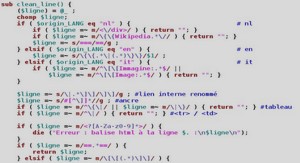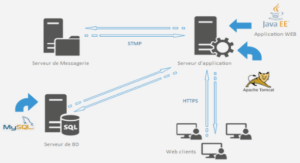WebLogic Server Basics
WebLogic Application Server comes with an HTTP server. As an administrator, you need to be comfortable with administering the HTTP server, and you must gain the necessary skills to administer server-side Java applications with this server. Organizations have hybrid collections of Web servers installed on their sites to support enterprise applications. Therefore, you should be able to integrate WebLogic Server with other HTTP servers.
UNDERSTANDING TCP/IP AND HTTP
HTTP is a protocol that regulates the Way web browsers and servers communicate. The TCP/IP (Transmission Control Protocol/Internet Protocol) suite of protocols is the primary open standard for network communication. HTTP (HyperText Transfer Protocol), part of this suite, is the protocol of the World Wide Web. All the information that resides on the Web as documents or pages is transferred from server to client with the help of HTTP.It is a stateless protocol, meaning that it doesn’t maintain active session state information about each client connected to the server. Rather, it is based on request and response architecture: the client contacts the server only when it needs information, and the server communicates with the client only when it needs to deliver information back to the client. Other protocols in the TCP/IP suite include UDP (User Datagram Protocol), ICMP (Internet Control Message Protocol), FTP (File Transfer Protocol), ARP (Address Resolution Protocol), RARP (Reverse Address Resolution Protocol), SMTP (SimpleMail Transfer Protocol), and NNTP (Network News Transfer Protocol). Web server software runs HTTP services and is able to host one or more Web sites. Each site is a collection of various documents and applications that form the Web content. This content needs to be delivered to Web clients over the network using HTTP.
Various HTTP servers are available on the market today, and most are similar in terms of what they provide because HTTP service is a standard feature of the Web. The WebLogic Web server is a Java-powered server capable of delivering not only static content, but also dynamic content with the help of Java-enabled technologies such as JSP and Java servlets. WebLogic Web server hosts and delivers static HTML/HTM files, images, Java applets, XML (Extensible Markup Language) documents, JSP, Java servlets, multimedia files, and other types of files. HTTP. The server software (in our case, the WebLogic Server) examines and interprets the request, prepares to locate the appropriate information, locates the information, and then sends an HTTP response to the client. This response is either an HTML document or an image file, which is then interpreted by the client’s browser software and presented on the client’s interface accordingly.
Let’s break it down even further. The Web server serves requested contents to the client—contents that are either statically available as HTML or dynamically generated using JSP and servlets. When a client sends a request for information to the Web server, the server maps the URL (Uniform Resource Locator) to a file with the given name on the local file system. Then either it reads the content from the disk and serves it out to the network with the aid of HTTP, or the server-side program generates it dynamically. For example, in the case of a URL that reads http://www.softwareklinic.com/index.html, the Web server software will serve index.html after locating and loading the file from disk to client. The information contained in the document is placed between HTML tags that, along with the requested information, are carried over the network using HTTP. The client software interprets these tags and presents the information in a fashion appropriate for the user.
Static Web documents are always placed in the respective folder in the appropriate directory. For example, all the static Web documents for the default Web app are placed in the default Web application folder. (Figure 1-2 shows the directory structure of WebLogic 6.1 and 7.0.)The default Web application directory contains documents delivered when the browser doesn’t specify a URI (Uniform Resource Identifier). In other words, if the server is listening on http://server:7001, that URL will respond with documents from the default Web application directory. If the browser requests http://server:7001/otherdocs, another Web application directory serves the otherdocs URI.





